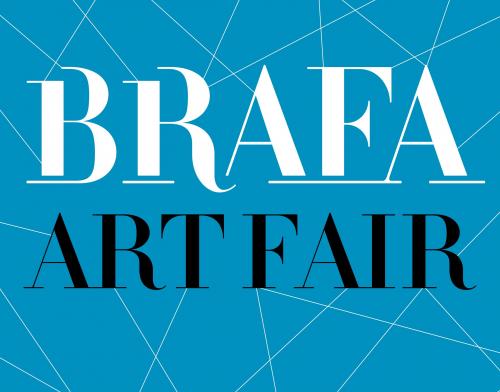Francis Picabia is one of the atypical figures of the artistic scene of the end of the 19th century and the middle of the 20th. Painter, draughtsman and even poet in the middle of his life, this iconoclastic artist explored many currents of his time, including Futurism, Cubism, Fauvism and Orphism. Moreover, his artistic trajectory inevitably met the path of Dada and Surrealism. From Paris to New York, he travels, spreads, meets and distills the ideas of the avant-garde; never ceasing to reinvent himself and always one step ahead of tomorrow's taste and yesterday's.
A chaotic schooling led him to enter the School of Decorative Arts, but he more willingly attended the School of the Louvre where he met the painters Georges Braque and Marie Laurencin. The year 1897 was the first significant date for Picabia as an artist; it marked his encounter with Impressionism through the discovery of the work of Alfred Sisley, reinforced a year later, in 1898, by the Pissarro family. All these encounters led him to exhibit regularly at the Salon des artistes français and the Salon d'Automne; it was a fruitful period that lasted more than ten years.
In 1909, a break occurred: Picabia took the path of abstraction, particularly with his work Caoutchouc created the same year, a work considered much later as one of the founding works of abstract art. During this year 1909, he also married Gabrielle Buffet, and four children were born of this union. This loving encounter with this young avant-garde artist was a real intellectual and pictorial stimulation for him, which accompanied him on the paths of Dadaism. Marc Le Bot wrote in his thesis, Francis Picabia and the crisis of figurative values: "more new ideas than any other avant-garde artist. He would have been cubist like Braque and Picasso, orphic like Delaunay and he would have invented abstract art, without ever agreeing to systematically exploit any of these formulas. This sentence is very symptomatic of the Picabia method, of his deep being and of his way of crossing life. It is a passionate genius who opens a new way with talent and who immediately abandons it to run to open another one, with as much genius, elsewhere; initiating the movement for the others. Francis Picabia is the story of an artist who revolutionizes, improves, or surprises the art world and its multiple movements. This way of doing, of acting, the artist follows it as well in art as in love, the two fields being closely linked for him. Simone Collinet, Germaine Everling and Olga Molher, Francis Picabia's three most important women, all correspond to a turning point in the artist's artistic life; as if art and love had to be in tune, one could not go without the other.
In 1911, Picabia joined the Puteaux group, gathered in the studio of the painter Jacques Villon, brother of Marcel Duchamp. The year 1913 for Picabia was synonymous with travel and discovery; he was invited to exhibit at the Armory Show as an ambassador and spokesman for the European avant-garde. The four paintings he exhibited at the time were met with mixed reviews from the critics, except for a few rare personalities who praised the artist's modernity. Paris at that time was still the center of gravity of art in Europe but this center tended to move to New York. Picabia took an active part in the avant-garde movements that introduced modern art to the American continent.
He met the Dada movement, which for Picabia corresponded to a completely personal and interior search for his art. This Dadaist enterprise inevitably brought him closer to André Breton; it was also he who sabotaged its foundations while maintaining a Dadaist approach in his future artistic endeavors and creations. An essential figure of the Dada movement in Paris, the man who sometimes called himself "loustic", sometimes "rastaquouère" or "funny guy" created his own myth, that of a worldly artist fond of women, the French Riviera, cars and galas. But the frivolity and casualness erected in Picabia's art of living should not overshadow a work in perpetual questioning. Among them, we can cite the mechanistic watercolors of 1915-1921 La Fille née sans mère to ready-made proposals or La Danse de Saint-Guy.
Francis Picabia also undertook a literary activity and founded in Barcelona in 1917 the magazine 391 in homage to Alfred Stieglitz with his magazine 291; the magazine lasted from 1917 to 1924 and proposed poems, illustrations and texts often violent and in a very aggressive tone. Man Ray and Marcel Duchamp regularly participate. There remains the question of Picasso and Picabia, "the two Pica"; this is how we can name the two enemy brothers who looked at each other sometimes with envy and sometimes with jealousy. The first is a known and recognized painter, who knows his style and who, like a laborer, declines it with method; the second is an adventurer, trying out all the styles and playing the permanent blow of brilliance, as well in the life as in the arts. Picasso and Picabia is the story of a relationship that does not say its name, the two artists living in a cold rivalry without being on the same pictorial lines. Where Picasso built his career, painted and exhibited, enjoying the fame he patiently built, Picabia decided to live and explore, never looking back and continuing to innovate.
The life of Francis Picabia is a true artist's life, in the first sense of the word, made of encounters, travels, undertakings, sometimes at the top of the bill, living from everything and for everything, sometimes reduced to normality and to a reasonable and tidy life. Francis Picabia can nevertheless pride himself on having been at the forefront of the avant-garde in many fields. He knew how to be in the exact place of the advent of modernity, sometimes as a simple spectator, and often as an actor of this change.

BRAFA 2016 (Brussels)
23 January 2016 - 31 January 2016
